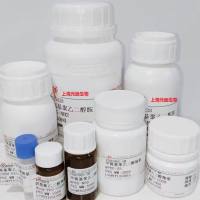Lipoxygenase-Catalyzed Phospholipid Peroxidation: Preparation, Purification, and Characterization of Phosphatidylinositol Peroxides
互联网
470
The importance of understanding the mechanisms of modulation of cellular signaling cascades by the peroxidized membrane phospholipids (PLs) is well recognized. The enzyme-catalyzed peroxidation of PLs, as opposed to their oxidation by air and metal catalysis, is well controlled and rapid and yields well-defined PL peroxides which are highly desirable for biological studies. Therefore, here, we chose bovine liver phosphatidylinositol (PI), a crucial membrane PL which acts as the substrate for phospholipase C in cellular signal transduction, as a model membrane PL. We successfully generated the PI peroxides with soybean type-I lipoxygenase (LOX) in the presence of deoxycholate, which facilitates the LOX-mediated peroxidation of the polyunsaturated fatty acids esterified to the PL. The LOX-peroxidized PI, after enzymatic catalysis, was separated from the unoxidized PI in the reaction mixture by normal-phase, high-performance liquid chromatography (HPLC). The extent of LOX-mediated peroxidation of PI following HPLC purification was established by the analysis of lipid phosphorus, conjugated dienes by UV spectrophotometry, peroxides, and loss of fatty acids by gas chromatography. This study established the optimal conditions yielding ∼46% of peroxidized PI from 300 μg of neat bovine liver PI that was peroxidized by soybean type-I LOX (50 μg) for 30 min in borate buffer (0.2 M, pH 9.0) containing 10 mM deoxycholate.





